How colourful is your staffroom? Recruiting, retaining and supporting the careers of ethnically diverse teachers
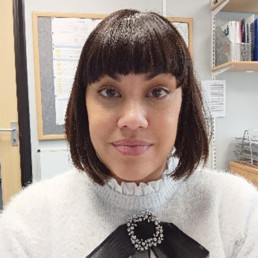
Written by Caroline Lowing
School Improvement Lead for HISP Multi-academy Trust. She was previously a Deputy Headteacher and has worked in Secondary education for 18 years. Caroline co-chairs the ASCL Ethnic Diversity Network and sits on Council for the South East of England. Caroline aims to be a Headteacher in the next 2 – 4 years.
Recently me and my colleague, Gurpall Badesha, presented to a room of school, college and trust leaders at the ASCL Conference on Recruiting and Retaining teachers of colour.
We hugely enjoyed the experience and got some great feedback but that wasn’t the best thing about it. The best thing was that most of the people in the room were white.
Since becoming co-chair of ASCL’s Ethnic Diversity Network I have really tried to carve out the time to be more informed and involved with the ED&I agenda and all of the fantastic organisations out there. I’ve attended meetings and webinars, I have had so many energising conversations and met so many inspirational people.
Even in the short time that I have been involved in this work I have noticed a big change. It is no secret that statistics around the recruitment, retention and career progression of people of colour in education are woeful. The DfE have reported that, in 2019, 85.7% of teachers were white with a staggering 92.7% of headteachers were white. Every way that you look at it, education has a big problem.
However, these statistics and what they mean for the young people that we serve can sometimes stop us in our tracks. The need to delve deeper and deeper into the implications is often overwhelming. I completely understand that we need to be heard and we need to share our own lived experiences. Goodness knows that I have told my own story many times and personal stories about, for example, being repeatedly mistaken for a teaching assistant when you are a Headteacher, are incredibly powerful.
The issue is that, often, the conversation will only go this far. The recent transformation in ED&I in education has been around what can actually do to enact change. This is why I was so pleased to see so many white school leaders in our session. These are people that want change and they want to learn how they can make that change from their position of relative privilege.
Providing solutions is hard. Coming up with ideas that work within every context is impossible. However, the magnitude of the problem coupled with the constant feeling of getting it wrong has led to a feeling of helplessness. When we shared ideas in our session, such as approaching parents from ethnically diverse backgrounds on the school gate to apply for governor roles, it was a joy to see people scribble it down to take back to base. Equally, it was wonderful to hear about schools that already have effective practices. For example, one school tracked its alumni through university and then approached students of colour to support them through joining the profession. I was frantically scribbling, then.
There is absolutely a lot to do to improve the recruitment and retention of people of colour in education but I am genuinely optimistic about the future, not least because school leaders on a mission get things done!
If you would like to know more about ASCL’s Ethnic Diversity Network then please contact Caroline at c.lowing@hispmat.org or she is on Twitter @caroline8779
Making the DEI mission of your school mean more than just words.
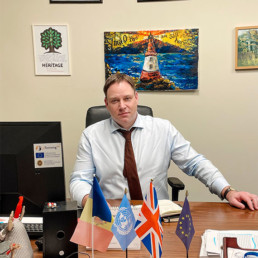
Written by Rob Ford
Rob is an educator for nearly 30 years, a history and politics teacher, a school leader in various schools in the UK and was principal of Wyedean School in the UK, before being appointed as Director of Heritage International School group.
“Our lives begin to end the day we become silent about the things that matter”. MLK
As my colleague sobbed with frustration and emotion in my room one afternoon, after a long day at school, going through what had just happened in class, I realised in that moment how powerless I felt there and then as a person but I knew how powerful my school’s culture, ethos and policies truly were in these awful moments. More than just words when put to the test to support my colleague as she asked for my help as a school leader.
My colleague, an international teacher, had been on the receiving end of a racist comment and it underlined to me just how much work we still have to do in our schools and communities to ensure such hurtful and offensive moments don’t happen especially when it comes to the words, beliefs and actions of children and young people in our care.
When we found the students responsible and put in place the necessary sanctions & follow up actions warranted, the comment from one parent said this to try and downplay the incident; “It’s like he was at the same table when the waiter was abused but all get thrown out of the restaurant”.
Illustrating perfectly with the choice of words that even the most liberal, educated, wordly wise and enlightened of school communities, especially those with many nationalities and a strong global outlook, need to continue to work together with the whole community, to challenge and change such mindsets. In contrast, the students were actually very contrite, apologised, owned their responsibility and repaired the damage done with their teacher who was prepared to move forward with them on this basis.
We cannot ever be silent on such issues as school leaders, nor should we feel powerless individually to tackle these issues successfully. We need to prioritise clear policies, culture, staff training and meaningful education in schools around issues & attitudes such as racism, nationalism, prejudice and hate that, unfortunately, have become more widespread in the 2020s around the globe. Doing nothing or hoping it won’t ever be something you will have to address is not an option either for any school leader.
Your school culture is not international because it says it in the title.
It is always quite surprising how many school leaders feel that issues around racism will never affect them because they are “an international school”. This is a very false assumption as much as stating how many different nationalities are in the school community. It doesn’t mean a school is diverse, equitable or inclusive and it’s a “lazy assumption” and derelict to avoid having a practical strategy in place because you say you are in the school’s name. Words matter here.
You need a robust Diversity, Equity and Inclusion Policy in place.
Your DEI policy should sit alongside the handful of ones, like Safeguarding, SEND, Teaching and Learning, Complaints, that you have in crumpled paper form, covered in notes and highlighter on your desk as a school leader because they are used as part and parcel of daily school life. There are some really effective, comprehensive and robust DEI policies out there to look at and adapt to your school.
Your DEI policy needs to be regularly reviewed, a governor responsible, a senior leader made responsible for it, and for it to be made publicly available, for your whole community to be aware of it with the key points clear. Get good outside experts to scrutinise it and for them to challenge you as a leader, your governors and your team on it as COBIS did to me and my school last year as part of our standards accreditation.
You need regular CPD for staff awareness and all your team believe and operate in this culture.
I couldn’t imagine annual staff training in August or regular CPD throughout the year, without time spent on our DEI, any more than I would leave safeguarding, the fire drill or Teaching and Learning out of what is central in the education and duty of care towards children. There are some incredible voices and forums out there for schools to follow and engage with and bring that outside expertise and experience to your school. Especially for schools and communities operating in homogenised and monoglot environments. Your DEI policy needs to be even more central in your strategy.
There are some incredible voices and forums out there for schools to follow and engage with and bring that outside expertise and experience to your school so tap into it; for example we have used Jon Gibson and Backdrop Education for staff training around inclusion and equity, America House in Chisinau extensively on diversity training, our governors have worked with Jackie Beard, a NLG and used the DEI programmes from NGA. COBIS have been working with Angela Browne and Hannah Wilson to deliver DEI training in schools and we are signing staff up for this outstanding & highly recommended programme for the courses this year. We also follow Hannah’s work in offering free DEI conferences and webinars to educators in the UK and around the World.
Raise student (and parental) awareness regularly, celebrating and commemorating our global, diverse communities in school daily life.
This is where you need to be prepared to be less than silent, especially in a World of labels thrown at schools such as “woke” or “cancel culture” for daring to celebrate and commemorate events in the global calendar such as Black History Month or Holocaust Remembrance. Do not shy away from what may be perceived as difficult topics or fearful of reactions.
In those school boards in the USA, where some parent groups are challenging schools for holding Black History Month events this February, because they believe it is teaching “CRT” (critical race theory), school leaders are tackling this challenge head on legally as we finally see this “false equivalence” called out and for a many, a hill definitely worth a stand on.
In Eastern Europe, the ugly racism black English footballers endured recently playing Hungary, became a very good debate topic for our IGCSE and A Level students and I was proud to see all of them call it out for the hate and ugliness it was. These are not the values these students want or their part of the world to be associated with.
We also are facing in Eastern Europe the contextual challenge of the conflict of Russia towards Ukraine, with students of both countries in our community, so we have worked with teachers on how to handle difficult questions on it and deal with issues that may arise from students in a safe arena of dialogue. This is the very reason why we educate children.
Make your community more inclusive and diverse.
This should include a recruitment policy that is more than just centred towards white Anglo-American educators and truly brings the global community to your school. I still hear the positive words of one of my students when she said coming to Heritage is like going abroad each day.
The same is about the speakers you have in school, the role models for children chosen and what you study in the curriculum. I have no issue with special days or months for events in the global curriculum calendar because it is a good excuse to highlight the work that is consciously there daily and it is not just for one day.
Schools shouldn’t worry about the odd criticism on social media because you celebrate or commemorate one day either, as long as this isn’t the only time some topics or events are looked at and studied. A “one off” is not a school culture but it is a good starting point to build on. Throughout this academic year, the UN’s #FightRacism campaign has underscored so many wider curricular events especially through whole school assemblies and cross curricular days we have aligned with as a school.
Conclusion.
We should live up to our school’s mission, culture and ethos, especially where we want future leaders to lead with the very values we claim we are about in our schools to young people including diversity, equity, justice and inclusion for a better future. Or as school leaders we will end up remaining silent on what matters most.
Ukraine, Russia, Palestine, Israel, Afghanistan, Covid-19, Climate Change…and so much more: how to get Political Impartiality right.
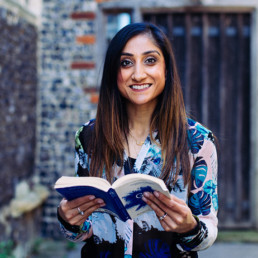
Written by Zahara Chowdhury
Zahara is founder and editor of the blog and podcast, School Should Be, a platform that explores a range of topics helping students, teachers and parents on how to ‘adult well’, together. She is a DEI lead across 2 secondary schools and advises schools on how to create positive and progressive cultures for staff and students. Zahara is a previous Head of English, Associate Senior Leader and Education and Wellbeing Consultant.
The last few weeks, or perhaps years, feel like a surreal blur when thinking about our global context. From the outbreak of Covid-19 to the recent war in Ukraine, it is now as if we are living through the dystopian and historical literature I once taught through fictional and non-fiction texts in the classroom. As teachers and educators there is an expectation that we not only educate students about these topics, but we must know and be aware of every article and news feed that emerges on a daily basis. In many ways, the recent Political Impartiality Guidance released by the DfE was as much to refresh our responsibilities as educators, but also to reassure teaching professionals too; unfortunately, social media coverage and wider analysis of the guidance seems to suggest the opposite. Our students and colleagues want to learn, discuss and explore current affairs, but how do we do this in light of this guidance and a school climate, where GCSEs, A Levels, limited time and limited resources dominate?
Much of the specific economic and political facts go over my head (even as a DEI Lead). Equally, my advice to teachers and schools is that you do not need to be a global, political, geographical or economic expert to address these matters. Instead, in order to get political impartiality ‘right’, whilst prioritising curriculum, teaching, learning and pastoral needs, we must remember what teachers and schools do best: we can critically navigate and evaluate the differing perspectives of world politics without being political. We can support students in how to challenge and respectfully discuss contentious topics. We can also help our students learn to be empathetic, acknowledge their emotions whilst being mindful of others too.
However, this in itself is challenging considering the ‘diversity’ within teacher training and lived experiences too. To help teachers and education professionals, below are some key learning points and explanations that can help schools get political impartiality right; if we are aware of them, we are more likely to create inclusive, safe spaces for all of our students and staff too.
Media Bias
There has been an outpouring of sympathy, global empathy, local and community charity and Influencer support for Ukrainian refugees – and rightly so. It has been heart-warming and necessary to see so many come together at a time of intense suffering to protect and support our human race. However, the media coverage and perception of refugee status has been problematic. In many ways, it seems some Western media outlets have usualised poverty, strife, pain and refugee status for particular races and regions but portray it as wrong for Western, white, ‘blue eyed’ individuals to experience the same. The question for teachers that might arise here is how do we explore such controversial media bias without making it ‘political’?
Aisha Thomas, founder of Representation Matters, asks a pivotal question: what story is your curriculum telling – a question that could not be more relevant in light of media bias, social media algorithms and being politically impartial in the classroom.
- Does your curriculum teach success stories from the East, North, South and West?
- Does it teach socio economic barriers (and opportunities) in the West, East, North and South?
- Is it gender equitable?
- Does it elevate the voices of all protected characteristics? Does every member of your class ‘see’ and ‘hear’ themselves in lessons?
- Is it intersectional?
- Is it fair?
- Is it truthful?
- Does it allow students to question, critique and evaluate the situations independently?
These are worthwhile questions to bring to the forefront of any CPD training and classroom work you do to strategically address belonging, equity, anti-bullying and teacher/student safety.
The media sources referenced above also contain bias – pretty much everything we read, see and explore does. However, it is important to explore the language and literacy of a range of media sources so students are able to have critical, mature and nuanced discussions – what every school ultimately aspires to!
Selective Empathy
Selective empathy is when we empathise with a particular group, particular causes and people for many reasons: it is dominant in the news; we relate to it, or maybe it feels close to ‘home’. Whatever ‘it’ is, it somehow resonates so much that we find ourselves becoming socially just, publicly outraged and visibly allying with a particular cause or issue. For example, you may notice that certain members of staff or students visibly ally with some causes more than others, whether that be the war in Ukraine, the Israeli-Palestinian conflict, anti-Semitism or LGBT+ rights.
Being selective in how and with whom we empathise in a globally diverse society is problematic. In many ways, it can lead to ‘whataboutisms’, alienation and further antagonism. If we are really committed to creating a diverse and inclusive world where protected characteristics need not exist and everyone feels a sense of belonging, we must approach all areas of DEI consistently – with nuance and transparent, shared values. Schools, teachers and students will need to ask themselves how they are creating safe, equitable spaces of belonging regardless of geography, economics, beliefs and values. Individuals with and without protected characteristics, individuals from marginalised and non-marginalised backgrounds need work together to create a sustainable culture for DEI. Equally, centralising ‘lived experiences’, the intersections of society and people who often fall victim to decisions and events beyond their control are who we need to ally with – they need our voice and their voices amplified. This is not political, that is just empathy and being human.
However, acknowledging our empathetic responsibilities can feel jarring; it can make some feel uncomfortable, critique ‘woke culture’ and more. Some may feel they are able to unapologetically selectively empathise – why should it matter that I empathise with one cause more than another? Why does it matter that I share my outrage for the war in Ukraine but not Syria? The answer to this question requires some introspective work:
- if we felt uncomfortable advocating for the rights and safety of Palestinian citizens in the Spring/summer of 2021, but little discomfort advocating for the safety and rights of Israeli citizens (I am using citizens and geography intentionally here as this is not a Semitic discussion), we must ask why? Does this discomfort or lack of responsibility enter your sphere of allyship with Ukrainian refugees? If not, why? If yes, why? If you feel your heart pang when you see your child or your students in a young Ukrainian child, but not in a Palestinian, Afghan or Syrian child, question why? If you are collecting charitable donations for Ukrainian refugees but this did not necessarily feel as urgent or necessary last summer again, question it. Do you find supporting and understanding the barriers faced by the LGBT+ community more accessible than anti-racism? Why?
These are difficult questions. They are challenging, jarring and some may choose to dismiss them immediately. I encourage you to work through the discomfort and potential feelings of offence. This is not a criticism, unnecessary ‘wokeism’ or misplaced social justice work; this is a call to critically address and navigate feelings of empathy. Empathy is a skill that needs to be nurtured and learned. Allyship is a set of actions that need to be consistently practiced and addressed. This is only possible if we are always sitting and working through our discomfort. It does not need to shake our core values and beliefs – instead, it reinforces that our core values and beliefs are wholly inclusive and respectful of all human life – not selective.
Intersectionality
The last 3 years isn’t a movie set in the past or a book we might be currently studying in lessons. It isn’t a case study for exam boards (yet). It is the lived experience of all of us. There are intersections to recognise, people to listen to and an opportunity to learn about globalisation, economics and geography in real life. Ask students what changes they’ve noticed: Chanel, Netflix and more no longer trading in Russia- what does this actually mean for the global economy, but also the different intersections of society? Create opportunities to learn about the intersections of economics and business and what the world will look like beyond this war. Ask students to question the impact of certain decisions and suggestions they see (and potentially support or refute) on social media. This can help overcome the fear and uncertainty associated with the current global climate – along with create opportunities for young people in a new and equitable manner.
Explore global inequality and diverse perspectives – why and how is the current world a result of a past world? There are multiple answers to explore here. This is where history, PSHE, RE, Geography, Economics, Philosophy and Politics can take precedence on the curriculum. Consider the questions and ways in which these topics are explored in their relative subject areas and how other subject areas can adopt their approaches. How can we make changes or additions to curriculum areas to explore wider perspectives?
Intersectionality is in effect, the very key to the success of every student, regardless of their background, protected characteristic, lived experience and more. An appreciation and amplification of nuance within our schools, society, student and staff body will create a culture of belonging and there is plenty of research to suggest that ‘belonging’ leads to success.
It is possible to remain politically impartial and work within a rich and valuable teaching environment. If we take a proactive, diverse and critical approach to current affairs we will be able to overcome the fear and discomfort associated with discussing ever-changing global and social climates. And, ultimately, we have the power in a classroom to create trusting and safe spaces for our students, communities and professional bodies – something that often goes amiss in the ‘politics of social media!
Cultural Intelligence
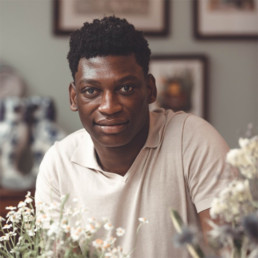
Written by Wangu Chafuwa
As a first generation immigrant, Wangu’s vantage as an insider-outsider led to a fascination in people, social relations and culture, which led to advocacy work with the British Youth Council. Wangu now uses his social consciousness and anthropological perspectives to bring human centred insights to the world of work.
Culture – and how we move through it – has also become one of the tabloids’ favourite news beats. How often do we see articles bemoaning the rise of cancel culture or so called culture wars? It’s understandable why lots of us feel nervous about approaching culture.
Even in itself culture is a difficult term to define. The Oxford English Dictionary contains 6 distinctly separate definitions of it: ranging from ‘the civilization, customs, artistic achievements, etc., of a people’; to ‘the artificial development of microscopic organisms, esp. bacteria, in specially prepared media’; to ‘the training, development, and refinement of mind, tastes, and manners’.
Culture is one of those funny little terms we all vaguely seem to understand but struggle to pin a precise meaning to. Which poses a problem as we’re routinely expected to navigate increasingly complex cultural environments.
It’s the reason why Cultural Intelligence (or CQ, like IQ) has been described as one of the essential leadership skills of the future. But how well do we understand what that really means?
There’s a phrase that’s probably misquoted to Einstein that says ‘intelligence is not the ability to store information, but to know where to find it’. Often when people hear Cultural Intelligence they think that it means having an itinerary of do’s and don’ts for cross cultural
interactions. Having this knowledge is obviously helpful, but the thing about Cultural Intelligence is that it is a practice – it has to be applied.
“But how?”, I hear you utter in anguish from beyond the screen.
In his 2011 book, “The Cultural Intelligence Difference,” Dr David Livermore highlights four capabilities to develop to effectively practise Cultural Intelligence:
CQ Knowledge relating to knowing different cultural expectations and the nuances of intersectional cultural expressions.
CQ Strategy relating to your ability to plan and prepare for multicultural interactions.
CQ Action relating to how appropriately you adapt your behaviour to accommodate different cultural contexts.
CQ Drive your interest and motivation to keep finding out more about different cultures.
Cultural Intelligence is the acknowledgement of the fact we all come from different places that hold deep meaning to us and a respect for how this shapes our individual perspectives. No one wants to be treated in aggregate. Practising Cultural Intelligence allows us to see people in their rich difference rather than one in an anonymous blob.
Our struggle to get to a singular definition of culture isn’t a failure to express, it’s a representation of the living, transforming and always shared experience that is culture.
We can see this buzzing diversity inherent in culture in the sheer number of different cultural expressions living around us. In all this contrast and colour is an infinity of possibilities. And the ever-present potential of friction.
The capabilities underpinning Cultural Intelligence may sound a bit jargony but luckily underpinning them is an innate capability to navigate our inherent differences. We are social creatures – all possessing empathy muscles that hardwire us to build bridges between us.
How East Stanley Primary School used Rainbow Laces to build a more inclusive environment for its pupils
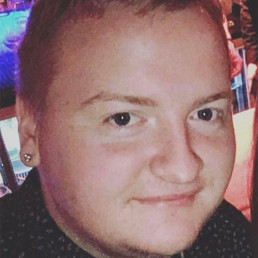
Written by Adam Walker
Adam is a Primary Teacher at East Stanley Primary School in Durham and is a member and advocate of the LGBTQ+ community.
‘The number one thing is the inclusivity benefits of the resources. Not having pupils question who is playing football and building a much deeper level of respect for each other.’
Creating an inclusive environment for pupils is a top priority for many teachers and their schools. As we celebrate LGBTQ+ History Month, Adam Walker, a teacher from East Stanley Primary school tells us about how using the Rainbow Laces resources, from Premier League Primary Stars, helped create a more inclusive environment for his pupils – increasing their understanding of gender stereotypes and the LGBTQ+ community.
“We had an incident at a football match a few years ago where a pupil from our school called a player from another team a homophobic slur. It was at this point we realised that we needed a solution that we could use to support our pupils in understanding the importance of being inclusive. After a long search to find the right solution, we came across the Rainbow Laces resources from Premier League Primary Stars. A bank of free resources that could educate our pupils around the importance of inclusivity, challenging stereotypes and being a good ally – it was exactly what we were looking for.
At East Stanley we are seeing more girls wanting to get involved in sport. So it was great to see Premier League Primary Stars use male and female professionals in their resources to show balanced representation of real sport. Activities such as ‘Do it like a…’ and ‘Be an ally’ have been popular with the pupils. It has especially given the girls something to look up to and through challenging stereotypes we have mixed teams playing football with a deep level of respect for each other.”
East Stanley has used the Rainbow Laces resources in PSHE lessons at the school to create a more open environment: “The Rainbow Laces resource pack helped us in our PSHE lessons when talking about what it means to be a part of the LGBTQ+ community or discussing gender stereotypes. Now all the pupils are aware of different types of representation; they know that it doesn’t matter if you are homosexual or heterosexual, a boy or a girl, your ethnic descent, or what your first language may be.”
As a member of the LGBTQ+ community, Adam appreciates the difference that resources like Rainbow Laces make: “Now that I have these resources I reflect and think that if material like this had been available when I was in school, it would have helped me to identify and feel more comfortable as a result of inclusive topics being spoken about openly. The more we use material like this in primary schools, the more we will create a better environment for everybody to live freely. It is only going to have a positive influence.”
Speaking about whether he would recommend the resources to fellow teachers, Adam said: “I would 100% recommend them. Knowing how the PSHE curriculum works, Rainbow Laces has been great for us. For other teachers who are looking to increase inclusivity at their school, we have loved the outcomes the resources have given us. Premier League Primary Stars has a wide variety of resources too and there is also the opportunity to build Rainbow Laces – and others resources – into additional lessons around Maths, English and PE. We have seen a real difference and our pupils are happier as a result.”
At the end of 2021 and during the Premier League’s Rainbow Laces campaign, Premier League Primary Stars launched a new resource pack called ‘Rainbow Laces – This is everyone’s game’. The pack, perfect to build into PSHE lessons this LGTBTQ History Month, includes an educational film, and supporting resources, celebrating LGBTQ+ football fans and showcases the power of football to bring people together. The film tells the story of a young Sheffield United fan and member of the LGBTQ+ community, who talks about what football means to her and how it has played a part in helping her to feel proud of who she is.
Premier League Primary Stars has a wealth of dedicated LGBTQ+ and Anti-Discrimination resources – all free – for teacher to use in the classroom linked to English, Maths, PE and PSHE here.
About Premier League Primary Stars
Premier League Primary Stars is a national primary school programme that uses the appeal of the Premier League and professional football clubs to inspire children to learn, be active and develop important life skills. Clubs provide in-school support to teachers, delivering educational sessions to schools in their communities. Free teaching materials ensure the rounded programme, which covers everything from PE and maths to resilience and teamwork, is available to every primary school in England and Wales.
The Premier League currently funds 105 Premier League, English Football League and National League clubs in England and Wales to provide in-school support for teachers.
For more information about Premier League Primary Stars or to register, visit: www.plprimarystars.com
You can also contact Ben Lewis-D’Anna on blewisdanna@everfi.com or 07590465455.
What it means to be a diverse educator
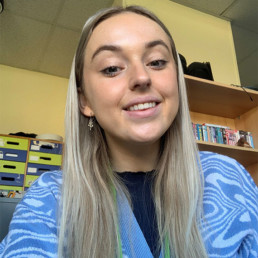
Written by Chloe Roberts
Chloe is an English trainee from Hampshire. She is currently completing her training with BASCITT.
Teaching for diversity refers to acknowledging and celebrating a range of differences in and out of the classroom. Being an inclusive practitioner who embraces difference allows transformations in the way we think, teach, learn and act. This is vital in ensuring all students feel celebrated in their learning environment. Although we have come a long way in recognising and celebrating diversity, we still have a long way to go. It is not a case of acknowledging that you are already ‘inclusive’, it is about educating yourself on key aspects of your students’ lives and the dynamics of society. This is something that I will continue in my practice as I embark on my journey to becoming an English teacher. I am quite fortunate that in my subject I can use a variety of resources within the classroom that celebrate a vast amount of different people and cultures, however, this is more limited in KS4 due to the GCSE specifications. Understandably there are more limits in other subjects but having more of an awareness of what you could do is vital. So going forward, what can you do to increase your own knowledge and understanding on diversity?
DiverseEd:
This site is a hub of resources and knowledge on diversity and inclusion. Hannah Wilson has created a space where a variety of practitioners can come together and share thoughts and research. In addition, events and seminars are organised regularly to support teachers and equip them with a breadth of knowledge.
I attended an online conference with Diverse Ed and the range of topics discussed were extremely informative. Hearing from a diverse number of practitioners gave me lots to think about in terms of my own practice. Inspiring teachers to be activists and encouraging a diverse number of people into the profession is a way to make waves in the education community. Jo Brassington, who discussed their own experience in the classroom as a non-binary teacher, claims that ‘to make change we need to be seen in the room’. I absolutely agree with this, as a member of the LGBTQ+ community I have always struggled with being open about my identity with others. Discussions like these have encouraged me to ‘be seen in the room’ and embrace my own differences, which some of my students can relate to. I am no way implying you must ‘come out’ to students if you do not feel comfortable, but having some transparency about your own lived experience can create a safe space for others to.
The whole morning was incredibly thought provoking and gave me a lot to think about in my own practice. Fortunately, there are recordings of the conference on Diverse Ed alongside lots of blog posts which can inform your teaching. (see below in further resources for website).
Seminars:
Over the past year I have attended a variety of seminars relating to diversity in education. All of which I have found on Eventbrite. I find this website incredibly useful for a range of different forms of CPD. It is accessible and the majority of seminars are free to access. This is another way to increase your knowledge on a variety of different topics, including diversity within education.
A recent seminar I attended was on ‘Recovering Black Storytelling in Qualitative Research’. This covered how we can encourage our students to use their narrative voice alongside a discussion on Stephanie Toliver’s new book, which is being released. She discussed the literary devices she used in her novel and the origins behind them, which was really interesting. The thought process behind a writer’s writing is always incredibly fascinating! This was a celebration of black culture along with discussions that can translate into the classroom. Although curriculums are becoming more diverse, I have found there is still a lack of celebration when it comes to people of colour; the negative connotations that are presented in literature through the texts we have historically studied are not changing. Why are we continuing to study outdated ideologies? I am not discrediting the fact that it is important to have an understanding of such things, but to prioritise information presented by white cisgendered men, does limit our understanding and knowledge of other cultures.
Overall, seminars are brilliant and can really inform your practice. Eventbrite has such a range from something subject specific or general CPD for teachers. I recommended having a look around the site and searching for seminars that spark your interest.
What can you do in school?
I think a good place to start is speaking to colleagues and gauge an understanding of what your school already does. In my previous school, I knew that there used to be an LGBTQ+ and ally group during lunch times. I then decided to reinvent the club and bring it back. I wanted to create a space where anyone could come and discuss their experiences and learn about the LGBTQ+ community. I was really pleased with the turnout and the maturity all students displayed when discussing their experiences. It was great to hear their ideas and what the school could do to ensure they were being more inclusive.
Speak to your departments and see what you can bring into the curriculum. Again, as an English teacher I am fortunate to be able to bring in a range of different texts that students can learn from; however, tutor time is an excellent way to go into more detail and have discussions with students regarding diversity and what it means to them. Obviously PSHE is an excellent way to integrate these topics but get to know what your students are learning in PSHE and relate that into lessons. In addition, during LGBTQ+ History month and Black History month, there are a range of one off lessons that you can use in school which celebrate and educate those on diversity. Please don’t limit yourself to using these resources during their celebratory months, there are so many amazing things we can learn from a variety of lived experiences.
Here below are a range of resources that I have found really useful in my learning journey:
Books:
- How to transform your school into an LGBT+ friendly place by Anna Carlile and Elly Barnes
- Celebrating difference: A whole school approach to LGBT+ inclusion by Shaun Dellenty
- From Ace to Ze: The little book of LGBT terms by Harriet Dyer
- The Emperor Has No Clothes: Teaching about Race and Racism to People Who Don’t Want to Know By Tema Jon Okun
- So You Want to Talk about Race By Ijeoma Oluo
- White Fragility By Robin D’Angelou
- Why I’m No Longer Talking to White People about Race By Renni Eddo-Lodge
- Memoirs of a Black Englishman By Paul Stephenson
- White Privilege By Kalwant Bhopal
- Not Light but Fire: How to Lead Meaningful Race Conversations in the Classroom by Matthew R. Kay
- Facilitating Conversations about Race in the Classroom by Danielle Stewart, Martha Caldwwell, and Dietra Hawkins (comes out in March)
- Knowing How To Discuss Race In The Classroom: A Guide For White Teachers On How To Develop and Understand Racial Literacy by Ashlee A. Jeannot
- A Little Guide for Teachers: Diversity in Schools by Bennie Kara
Websites:
- Stonewall: LGBTQ-inclusive education: everything you need to know (stonewall.org.uk)
- Youth.gov: Schools | Youth.gov
- Breakout Youth Basingstoke: About Breakout Youth: LGBTQ+ Hampshire-based Charity
- Diverse Ed: https://www.diverseeducators.co.uk/
- Black Men Teach: https://blackmenteachtc.org/
- Preparing for Cultural Diversity: Resources for Teachers: https://www.edutopia.org/blog/preparing-cultural-diversity-resources-teachers
- Resources for Educators: https://equaliteach.co.uk/education/classroom-resources/
People to follow on Twitter:
Here are some of the things I have thought about when increasing my knowledge on diversity. It is a journey and it is important to ask yourself difficult questions and reflect on what you can do within the classroom. As teachers we can all be activists and create an environment where all of our students feel heard and validated.
“You never get a second chance to make a first impression.”
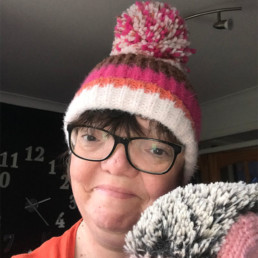
Written by Corinna Richards
An avid crocheter, who also happens to teach, train and lead.
“You never get a second chance to make a first impression.”
— Andrew Grant.
Whether Oscar Wilde or Will Rogers said it first, isn’t for this purpose particularly important. What any student or teacher with a facial disfigurement will tell you, is that it’s true. And the experience of that is hugely important. It’s always been true, but in our “beauty bias” society, looking different – whatever that difference may be, is a big deal. Having a facial or ‘visible difference’ can be excruciating. Our physical appearance matters in first impressions. I’m not saying it should, but from my experience it does.
I blog about this from two perspectives. Firstly, as a person with a congenital facial disfigurement who works in Education and secondly as an EdD student. I’ve just turned 50, and “back in the day” plastic surgery wasn’t as developed as it is now. I had my first plastic, corrective surgery at the age of 11, so I spent my primary school years looking very different. My skull fused together in the womb prematurely which caused my eyes to be extremely wide set and for my nose to be virtually flat with two small nostrils. You can imagine…
However, like everyone, I’ve adapted, over-compensated and fought my way back. I always wanted to teach and that’s what I’ve always done. Apart from three terms in suburbia I’ve always taught in inner city London and only once did I have any issues regarding my face from a pupil. I loved and still do, the diversity of the inner-city, the children were remarkably accepting of my appearance, we were all shapes and sizes together, the issue of ‘normal’ just never seemed too prevalent. The same couldn’t be said for the parents! The suspicion of my appearance was always there, in some heated exchanges a name regarding my appearance would slip out (yawn… I’ve never heard that one before…) and I’ve even had some parents ask my secretary what is wrong with my face! (One of the many reasons I prefer children to adults!)
But last year, I had a bit of a shock.
I am in the third of year of EdD at UEL and I am studying the lived experience of Imposter Phenomenon in Teacher Educators. It’s really interesting, but it wasn’t my first choice. Initially, I wanted to study IP in teachers with visible differences. I couldn’t find any. I didn’t know any. I didn’t know any teachers with facial burns, or severe acne, or disfiguring birthmarks or craniosynostosis… statistically they must exist (I am for one)… but where are they? I then thought about all the pupils I have taught over nearly 30 years… lots of differences, but when did I teach a child who was like me? I don’t think I have. Where are these children and where are the teachers?
Recently, in an updated version of Malory Towers, a young actor, Beth Bradfield, with a visible difference joined the cast, but how often do we see actors with facial burns or scars? Possibly in James Bond, but then of course, only as the villain. I attended my first DEI event last weekend, it was brilliant. Representation matters. Yes, it does. So how do I help other people like me have the courage to stand in front of groups of people and teach. I spent decades of my life trying to hide my face. I was desperate to make my visible difference invisible. It seems like I might not be the only one.
For more information visit:
‘Changing Faces’:
The Katie Piper Foundation: www.katiepiperfoundation.org.uk
Headlines:
Geography: Righting the world?
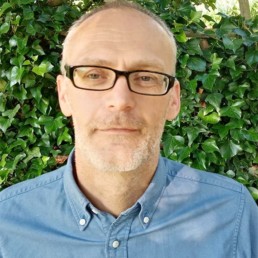
Written by Steve Brace
Head of Education and Outdoor Learning at the Royal Geographical Society. He started his career as a geography teacher and had previously led the education programmes for ActionAid and the Commonwealth Institute.
Studying geography enables young people to better understand the world’s people, places and environments, the interactions between them – from the local to the global scale.
As Ofsted notes, this requires teachers to critically reflect on the imagery, data and attitudes they portray to pupils, so that geography can accurately represents the nature of the world’s people, communities, economies, diversities and experiences (Ofsted 2021). And, as our world continues to change so must geography. This makes the subject such a fascinating and challenging one to teach and why geography has an important role in supporting equality, diversity and inclusion (EDI).
Geography has one of the best gender balances of all subjects and over the last 10 years its GCSE cohort has become much more diverse. Since 2010 its GCSE entries have increased by over 50% reaching a record high of 282,000 candidates last summer. It is welcome that this growth has come predominantly from those groups who were previously less likely to study geography: Black, Asia and minority ethnic pupils; pupils with lower prior attainment; those from low-income backgrounds; and/or pupils studying in comprehensive schools (RGS 2020)
However, the positive change at GCSE is not yet being seen at A Level and the narrowing of intake continues further at university. This is despite the positive outcomes that geography provides for its graduates, who experience above average rates of graduate employment and ‘top 10’ graduate salaries.
It is recognised by the colleagues across the subject community that more work is needed to better support EDI in relation to the curriculum, resources, the teaching workforce and how the subject can support young peoples’ career aspirations. Examples of current activities include:
- Puttick and Murrey’s research (2020) which identified that the ‘piecemeal approach to geographies of race and racism is insufficient for educating students for the 21stC’
- The scholarship shared through the RGS’s Decolonising geographical knowledges conference
- The Higher Education community’s support for accessible and inclusive fieldwork and pride in the field
- The advocacy and work of Black Geographers
- And teacher led initiatives such as Decolonising Geography , Inspirational Geographers and – alongside many others – that of Shiv Das, Hina Robinson and Hafsa Bobat
There are also opportunities to reduce the gap between geographical research and the classroom, such as through the RGS’s Ask the Geographer podcast which share the work of research geographer with teacher and their pupils. Schemes-of-work can also be updated through the incorporation of new research findings, such as the resources based on the Migrants on the Margins research programme which investigated the lives of migrants in Colombo, Dhaka, Harare and Hargeisa. Such resources are further complemented by the wider contributions of many others including Worldmapper, Gapminder and Dollar Street.
Consideration needs also to be given to not only to what is being taught, but also who is teaching geography. This situation is explored in I didn’t have any teachers that looked like me which shares the perspectives of Black, Asian and minority ethnic trainee and early career geography teachers. And they recommend the need for EDI to be held as a responsibility for all geography teachers, as well as the wider subject community and its institutions.
Geographers can also critically reflect on the subject’s development through Britain’s period of Empire and imperialism, how the subject helped create and share stereotypical views about the world and the continuing legacy of these. For example, the very first volume of the Proceedings of the Royal Geographical Society (1857) an author ascribes the Moroccan town of Sala’s decline to “ignorance, despotism and Mohammedanism”. However, dissenting voices – including those of African descent – can be found in geography’s history, such as the 19thC testimony of James Africanus Horton of Sierra Leone and Edward Blyden of Liberia. Both were critics of Eurocentric stereotyping of African cultures and provide an early precursor to Chimamanda Adichie’s warning of a single story. Now in the 21stC there an imperative to rediscover geography’s diverse voices some of which can be seen in the RGS’s Hidden Histories of Exploration which highlighting the important contributions of African, Asian and Inuit people
As the geographer Professor Chris Philo recently said – geography invites both ‘earth-writing’ – words to evoke worlds, and ‘earth-righting’ – actions to improve worlds. For this to be achieved geography needs to become more equal, diverse and inclusive. Many within the subject have been setting a course to help achieve this, though this journey has still significant distance to travel.
Belonging, safely
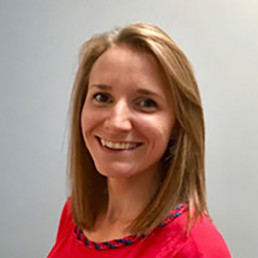
Written by Gemma Hargraves
Gemma Hargraves is a Deputy Headteacher responsible for Safeguarding, Inclusion and Wellbeing.
Reflecting on several sessions from the recent Diverse Educators virtual conference it struck me that so much of our EDI work is also vital safeguarding work. As a Deputy DSL I spend my days balancing pastoral care, safeguarding, History teaching and various other responsibilities. Until now I actually hadn’t realised how my EDI work is complementary to my safeguarding work.
All readers will have heard that “you can’t be what you can’t see” and this need for recognition and role models extends to safeguarding too. Pupils need to know they are in an environment where they are valued and celebrated in order to feel truly safe. It strikes me that a pupil may not disclose various issues if they feel they would not be heard, understood or believed. Beit a neurodiverse pupil struggling with issues around consent, an LBGTQ+ young person experiencing unkindness, a disabled child faced with ableism daily or a person of colour dealing with regular microaggressions. Of course having a diverse staff body, including in senior positions, may help ensure all pupils feel safe and a sense of belonging but active allies have a vital role to play here. Pupils in the first presentation said “ignorance breeds intolerance” and I would build on that to say in safeguarding terms ignorance is dangerous. We all need to be professionally curious whilst being respectful. @AspringHeads gave some examples of shocking things Black teachers have been asked, including endless comments about hair, skin colour or names, and comments of this nature to Black pupils would absolutely be considered a safeguarding concern.
A key part of safeguarding is also accurate and timely recording of incidents; this is key to tracking trends and understanding context to actively promote inclusion. If we are to ensure all pupils are safe and can thrive, we need to have a clear picture of incidents or challenges faced. We have a duty to ensure that pupils are not negatively labelled or stereotyped based on any characteristic and teachers have high expectations of all pupils. Safeguarding is also about preventing harm to children’s development and taking action to enable all children and young people to have the best outcomes – here EDI is clearly vital and we can see tangible returns on investment in diversifying the curriculum. Of course, we reinforce this by the displays around school, the books studied, the trips that are offered etc but the culture individual teachers nurture in their classrooms is key to both EDI and safeguarding.
As was made clear at Diverse Educators recently, good intentions are not enough. We must act. EDI requires resourcing, time and energy. It must not be an afterthought in another year of TAGs marking and administration, staffing issues and COVID challenges ad infinitum. Safeguarding is everyone’s responsibility and so is EDI. We need to recognise and respect cultures, traditions and changes but with clear red lines in terms of safeguarding to ensure everyone can bring their whole self to school and be safe. Sometimes we hear “I don’t see colour” but surely we must see it, value it, celebrate it and protect all children regardless.
Limp Handshakes and Auditory Bias: My Process of Applying for Headship
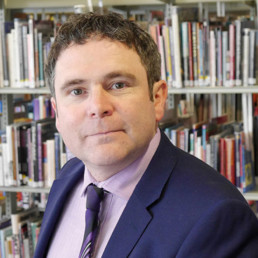
Written by Kevin Carson
Headteacher at The Royal Masonic School for Girls. A learner, an English teacher, and a dad to 2 fab girls. Originated in Liverpool, enjoying living in the Shires.
I have been attending a monthly Diversity, Equity, and Inclusion leadership programme with Diverse Educators since April 2021. It is led by @Ethical_Leader and @Angela_Browne, and it has uplifted, educated, and inspired me every month.
Hannah and Angie are clear and correct that DEI work is safeguarding work, that well embedded DEI makes school communities safer places. The aim of their programme is not to rush into anything in a knee-jerk way, but to listen, reflect, learn, and then start to put together a 3-to-5-year plan that works for each school: carefully planning sustained change over time.
At the start of this week’s session, mention was made of an excellent candidate for headship who so far has not been appointed and there was a feeling that this may at least in part be connected to his race and from that perhaps also in part to his strong accent. This anecdote stayed with me after the session, conscious as I am that over 96% of male and female headteachers in England are white, and with my own awareness of how frequently my accent was referenced when I was applying to be a Headteacher.
I have decided to share a couple of anecdotes relating to my applications for the post of Head at independent schools when my accent was considered a relevant factor.
I once applied for a Headteacher post where afterwards I was told by the head-hunters, “You were the preferred candidate, the first choice, but the Board have decided not to appoint. They were quite vague and evasive with us about why this was, and they could only give reasons such as ‘His handshake wasn’t strong enough’, whatever that means. I think you can draw your own conclusions from this, Kevin.” A few months later, the Bursar at that particular school later told me straight that the Chair of Governors didn’t wish for somebody from my background as Head of ‘his’ school.
On another occasion I attended a training session with one of the head-hunter firms, as part of a course for half a dozen applicants who they felt were close to headship. Afterwards, the course leader told me, “We agreed that you were the strongest candidate from the process we saw today. You are 100% ready to be a headteacher, but we think that you should seriously consider booking yourself in for elocution lessons because your accent will be the reason that you are not going to be appointed.” As an English teacher I know enough about language, culture, and identity to be able to reply that if a school didn’t wish to take me as I am then they weren’t the right school for me and I wouldn’t wish to be their headteacher.
For those who do not know me, as my About Me section says, I grew up in Huyton, Liverpool, a working-class area that is in the second most deprived borough in England, and I have quite a strong Liverpudlian accent. The Chair of Governors at my then current school did make a decision to directly address my accent in his reference, raising it as a potential consideration before clarifying why this shouldn’t be a factor in a Board’s thinking, pre-emptively calling this out as it were.
I am a straight, white, male headteacher of an independent school. I have a 1st class degree, and an M.Phil. from Trinity College, Cambridge – there is a whole bunch of privilege there. At the time of the anecdotes above I was also Interim Head of The Grammar School at Leeds, a large, diamond model school. I had quite a strong CV on paper, and to be honest I suspect that in a comparable way to my accent wrongly being deemed relevant at interview, it is also not inconceivable that my educational background helped get me to the interview stage. Some Boards like this kind of thing, taking it to signify far more than it should.
I want to be clear that this is not a post about bias and class in the independent sector. I have worked in four independent schools, valued them all, and have found them all to be far more egalitarian workplaces than some might imagine. Very many people working in the independent sector desire to do social good and to help to create a more inclusive and sustainable world. More specifically, in RMS, I have found a values-led school with a strong ethos that is prepared to think differently about all aspects of education. I feel appreciated there for who I am, and my accent or social background aren’t referenced in relation to the job that I do because nobody feels they are relevant.
But I have shared a few of my experiences here, (and each of these are only from six years ago), as anecdotal evidence that bias is still out there in appointing Heads. The education system would be a better place if this were not the case, and we all need to consider the ways in which we can demonstrate commitment to a diverse, equitable, and inclusive staff community in our schools. For me, it was bias in relation to attitudes to social class, and a little bit of auditory bias. The government figures from 2019 indicate the extent to which this is a far greater issue in relation to race and ethnicity.
The data shows:
- There were around 22,400 headteachers in 2019, and over two-thirds of those (around 15,100) were women
- 96.1% of female headteachers were White (92.6% White British, 1.7% White Irish and 1.8% White Other)
- 97.0% of male headteachers were White (92.9% White British, 2.1% White Irish and 2.0% White Other)
A few final thoughts on this topic for now from me:
- I hope and want to believe this bias and prejudice is receding, gradually diminishing. I believe in the transformative power of education as a force for social change that makes a positive difference. Interestingly, the Foundation that found my background not the right fit for them and that blamed it on my limp handshake have changed their entire Board since then, and there are now seven women and three people of colour on a more diverse Board there. You would like to think this would not happen again.
- @jillberry102 was a great source of advice and support throughout my applications for headship. She always said that in the end you find the right school for you, the right fit for you. I do think there is something in this. I can now view my earlier experiences as lucky escapes.
- There is a great deal I have taken from the Diversity, Equity, and Inclusion leadership course, both from the leaders and from the brilliant colleagues that are attending with me from both sectors, and from the UK and overseas. I am sure I will write about this learning again, including about how we strive to apply it at RMS. We have just appointed two DEI leads at RMS – they are brilliant colleagues who will do a great deal of good in this role. My first show of support for them was to sign them up for Hannah and Angie’s training course with Diverse Educators.

